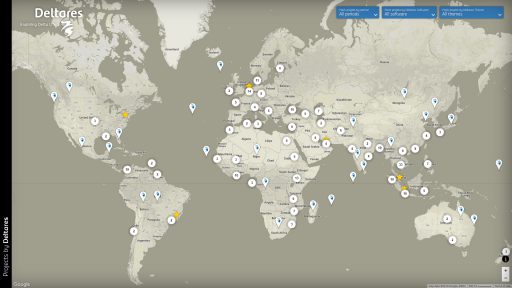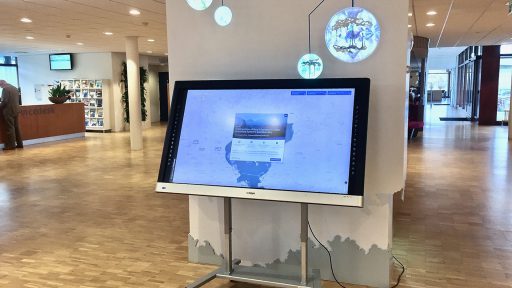Touch-enabled information kiosk
Posted on .
The Deltares’s management of the international department had the desire to have a way to show the international level of the projects the company runs. It had to look good, fit the corporate identity well and be mobile and usable in a kiosk stand in the reception area of the both Dutch offices.
To come up with good use cases and scenario’s, together with stakeholders I started to look on how other companies had solved this. Getting inspiration from these products, we defined requirements for our own.
The project descriptions had to come from an existing source, as otherwise the administrative load would be too large to continue the product in the future. The internal IBIS information system had a large set of project descriptions, so that would be an ideal source for this solution.
Map
Based on the requirement to have it available on tablet devices, some sort of web application was the obvious choice for a medium. So the next logical step was to look for a mapping service to present the projects on. Earlier we had agreed to present the projects on a world map to communicate the international level of the projects. After some research and trails, we ended up with Google Maps as this would give us the best visual results with less effort. And the visual aspect was rated very high as this product had to be an eyecatcher in the reception area. Guests waiting to be picked up by employees should be encouraged to play with the map.



Context
I also looked at the physical aspect of the device that we could use for this project. It had to be a large touch-screen that was operable by every single guest. In the future the screen could be integrated into the wall of the reception are, so it would be a fixed position. That gave a challenge as people in wheelchairs as well as very tall people would feel free to operate the screen. That solution was rather easy, all interactions should be part of the draggable map, so any interface element could be placed in a desired position. For the time being, the screen was placed on a moveable stand, to have it flexible usable on events like the Deltares Software Days.

